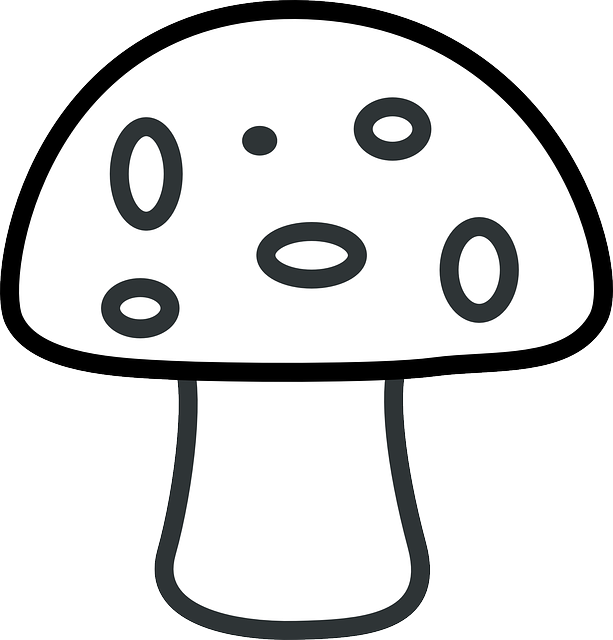The Amanita Muscaria, commonly known as the fly agaric, is a historically significant and culturally revered edible mushroom that has garnered scientific interest for its potential therapeutic benefits. It contains active compounds like ibotenic acid and muscimol, which are being studied for their effects on neurological conditions such as depression, anxiety, Alzheimer's disease, ALS, and MS due to their neuroprotective and modulatory properties. Research is ongoing to understand the full scope of its pharmacological effects and to explore its medicinal applications responsibly, with a focus on safety and ethical considerations. The use of Amanita Muscaria for both therapeutic and recreational purposes is accompanied by calls for careful dosage, safe settings, and adherence to the law due to its potent psychoactive effects and varying legal statuses across regions. As a substance with deep cultural roots and significant potential for scientific advancement, Amanita Muscaria's future role in health and well-being is an area of complex multidisciplinary study.
Explore the intricate world of Amanita Muscaria, colloquially known as the fly agar, a mushroom renowned for its psychoactive properties and deep historical roots. This article delves into the transformative effects of Amanita Muscaria, from its chemical makeup to cultural significance, and examines its therapeutic potential in modern medicine. Journey with us through the scientific, historical, and cultural lenses that illuminate this natural marvel, while also addressing the critical safety considerations and legal status surrounding its use. Join us as we navigate the future prospects of Amanita Muscaria research, considering the ethical implications of its exploration.
Unveiling the Secrets of Amanita Muscaria: Nature's Psychedelic Phenomenon
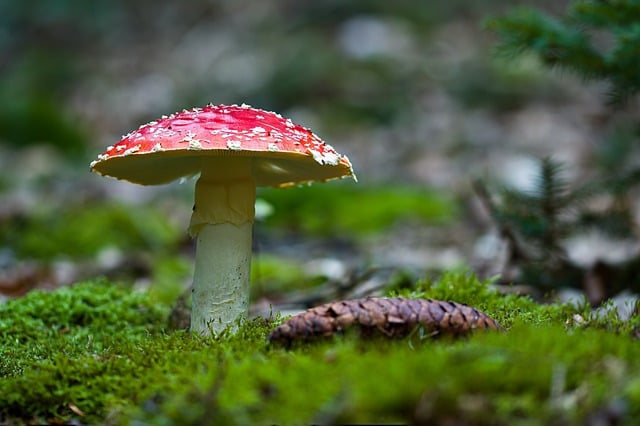
The Amanita Muscaria, commonly known as the fly agaric, is a iconic and highly recognizable mushroom found across diverse natural habitats. Its vibrant red cap with white spots and stem is not just a picturesque element in folklore and fairy tales but also a natural psychedelic substance. This mushroom has been the subject of fascination and study due to its psychoactive properties, which are primarily attributed to the presence of muscimol and ibotenic acid. Historically, cultures across various regions have used Amanita Muscaria in both ritualistic and medicinal contexts, showcasing its edible potential when prepared correctly. The effects of consuming Amanita Muscaria can be profound, often leading to altered perception, hallucinations, and a significant alteration of consciousness. These experiences can range from mild to intense, depending on the dosage ingested and the individual’s physiology.
The psychoactive compounds within Amanita Muscaria have been the focus of modern research aimed at understanding their potential therapeutic applications. Studies are examining the mushroom’s impact on mental health conditions such as depression and anxiety, as well as its neuroprotective properties. The Amanita Muscaria edible form, when harvested and processed with precision, offers a unique gateway into the realm of psychedelics. Its use in clinical settings is being explored to better comprehend its effects on the human brain and to potentially unlock new treatment modalities for various psychological ailments. The ongoing exploration of Amanita Muscaria’s psychoactive qualities underscores the importance of both scientific investigation and cultural respect as we delve deeper into the secrets nature has woven within this remarkable mushroom.
Historical Perspectives on Amanita Muscaria: From Folklore to Science
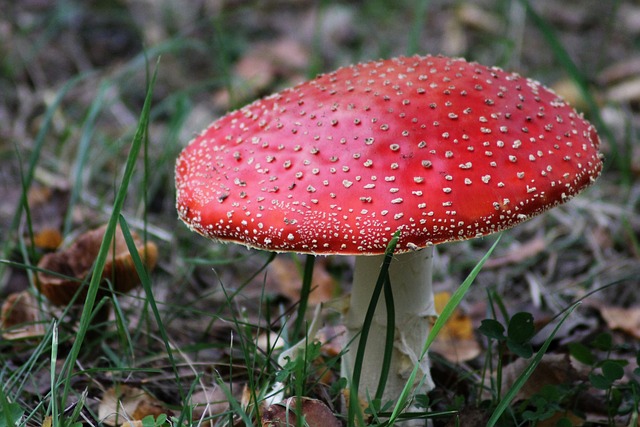
The Amanita Muscaria mushroom, with its iconic red and white cap, has long been a subject of fascination across cultures and eras. Historically, this psychoactive fungi has been woven into the folklore of various societies, often depicted as a magical or mythical entity. In Siberian shamanistic practices, the Amanita Muscaria edible was revered for its ability to facilitate communication with the spirit world. Similar accounts are found in Finnish and other Nordic cultures where it was considered the embodiment of toadstools that could impart wisdom and bravery. These tales underscored a deep-seated belief in the transformative powers of this mushroom, which extended beyond mere folklore as its use spread across continents.
The transition from mythological significance to scientific scrutiny has been gradual but significant. The Amanita Muscaria’s psychoactive properties have been documented since ancient times, with reports indicating its ingestion for both ritualistic and recreational purposes. Modern research has begun to elucidate the pharmacology of this mushroom, revealing its active compounds, including muscimol and ibotenic acid, which are responsible for its mind-altering effects. Scientific studies have examined its potential therapeutic applications, exploring the possibility of its use in treating various conditions, from depression to cluster headaches. The exploration of the Amanita Muscaria edible’s effects continues to be a topic of ongoing research and debate, bridging the gap between historical use and contemporary scientific understanding.
Chemical Composition and Pharmacological Properties of Amanita Muscaria Edible
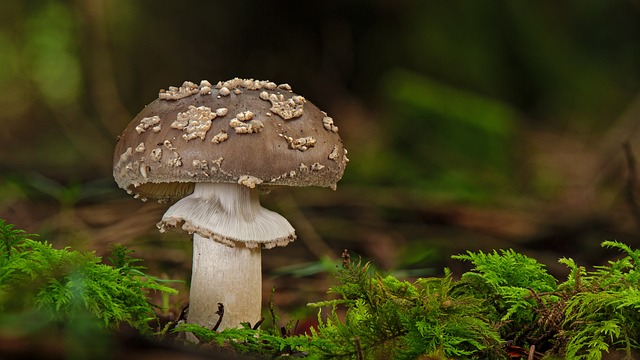
The Amanita Muscaria edible, commonly known as the Fly Agaric, is a species of mushroom with a rich historical and cultural tapestry. It contains several psychoactive compounds, primarily ibotenic acid and muscimol, which are responsible for its mind-altering effects. Ibotenic acid, initially present in high concentrations within the mushroom’s cap and stem, can degrade into muscimol upon drying or heating, thus affecting the user experience based on how the mushrooms are prepared. Muscimol is a hallucinogenic compound that binds to the gamma-aminobutyric acid (GABA) type A receptors in the brain, leading to altered perception and consciousness. The pharmacological properties of these compounds manifest as visual and auditory hallucinations, euphoria, and dissociative experiences. It is crucial for users to approach the consumption of Amanita Muscaria with caution, as the effects can be unpredictable and potentially harmful due to the presence of these active substances. The chemical composition of this mushroom has been extensively studied, revealing a complex interplay of alkaloids and other bioactive compounds that contribute to its unique pharmacological profile. Users must be aware of the dosage, preparation methods, and individual sensitivities when engaging with Amanita Muscaria to minimize risks and ensure a safer experience.
The Psychoactive Journey: Experiencing Amanita Muscaria's Effects

The Amanita Muscaria, commonly known as the Fly Agaric, is a iconic psychoactive mushroom whose effects on the human mind have been documented for centuries. Consumption of this edible, when prepared correctly, can lead to profound alterations in perception, cognition, and consciousness. The experience typically begins with sensory enhancements; colors become more vivid, sounds may seem clearer, and textures appear more defined. As the effects intensify, users often report an out-of-body sensation, where their consciousness detaches from their physical form, leading to a unique introspective journey. This detachment can be accompanied by euphoria or, conversely, an emotional rollercoaster as one grapples with altered states of awareness and a dissolution of the ego.
The psychoactive compounds within Amanita Muscaria, namely muscimol and ibotenic acid, are responsible for its mind-altering effects. The dosage greatly influences the experience; lower amounts can result in mild hallucinations and an uplifting mood, while higher doses may lead to more intense visual and auditory hallucinations, profound introspection, and a significant shift in one’s sense of self and reality. It is crucial to approach the Amanita Muscaria with caution and respect for its potent effects, as the experience can be both enlightening and overwhelming. Users should be in a safe environment, with a clear understanding of their own mental state and the potential for intense experiences. The Amanita Muscaria’s effects are not to be taken lightly, and any exploration into its psychoactive properties should be conducted responsibly and legally, with consideration for the legal status of the mushroom in one’s region.
Cultural Significance and Ritual Use Across Societies

Throughout history, the Amanita Muscaria Edible mushroom has held a significant place in various cultural rituals, often as a means to induce altered states of consciousness and facilitate spiritual experiences. In Siberian indigenous cultures, for instance, these psychoactive mushrooms have been traditionally used in shamanic practices. Shamans would consume Amanita Muscaria Edible to enter realms perceived as spiritual or supernatural planes, where they believed they could interact with spirits and gain wisdom that would benefit their communities. This cultural significance extends beyond Siberia; similar rituals have been documented among Finnish folk traditions, where the mushroom was revered and depicted in folklore and art, often linked to mythological beings like toadstool-riding flying reindeer. The use of Amanita Muscaria Edible in these rituals underscores its role as a bridge between the mundane and the mystical, reflecting a deep connection with nature and the belief in an interconnectedness of all life forms within many societies. In other cultural contexts, such as among certain Native American tribes, Amanita Muscaria Edible was incorporated into vision quests and healing ceremonies, further highlighting its cross-cultural use for spiritual introspection and communion with the divine or ancestral spirits. The consistent presence of this mushroom in historical and contemporary ritualistic contexts across diverse societies underscores its profound cultural significance, beyond its physical characteristics as a hallmark of forests and fairy tales.
Therapeutic Potential: Amanita Muscaria in Modern Medicine
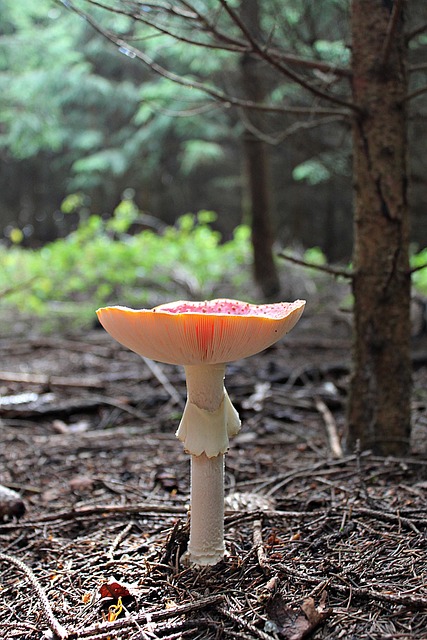
The Amanita Muscaria, commonly known as the fly agaric, has long been a subject of intrigue due to its psychoactive properties. Historically used in various cultures for its mind-altering effects, recent scientific interest has shifted towards its therapeutic potential. Modern medicine is exploring the possibility of leveraging Amanita Muscaria’s active compounds, including ibotenic acid and muscimol, for a range of therapeutic applications. Preclinical studies have indicated that these substances may have neuroprotective effects, suggesting their potential in treating conditions like Alzheimer’s disease, amyotrophic lateral sclerosis (ALS), and multiple sclerosis (MS). Research has also shown that Amanita Muscaria can modulate the activity of certain neurotransmitters, which could be beneficial for patients suffering from depression or anxiety. The edible mushroom’s active ingredients are being studied for their antioxidant properties as well, which may contribute to their potential therapeutic effects. As research continues to evolve, Amanita Muscaria’s role in modern medicine is becoming increasingly promising, with a focus on its ability to offer new treatments and therapies for various neurological conditions. Safety and efficacy remain critical considerations as this research progresses, ensuring that any therapeutic applications are grounded in scientific evidence and ethical standards.
Cautionary Notes: Safety Considerations and Legal Status
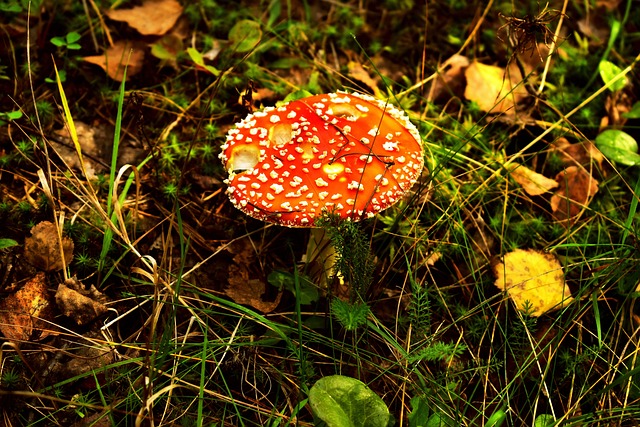
The consumption of Amanita Muscaria, commonly known as the fly agaric, is steeped in historical and cultural contexts but must be approached with utmost caution. This mushroom, recognized for its vivid red-and-white cap, contains psychoactive compounds that can induce profound changes in perception, consciousness, and cognition. While it has been traditionally used in some cultures for ceremonial or spiritual purposes, its safety profile is complex. The psychoactive elements, including ibotenic acid and muscimol, can lead to significant physical and psychological effects, ranging from euphoria and visual hallucinations to nausea and delirium. It is imperative to understand that the ingestion of Amanita Muscaria carries inherent risks and should only be considered under knowledgeable supervision or within legal contexts.
The legal status of Amanita Muscaria varies globally, with some countries allowing its cultivation and use for personal, spiritual, or ceremonial purposes, while others classify it as a controlled substance due to its psychoactive properties and potential for misuse. In regions where it is legal, guidelines are often strict to prevent harm; users must be informed about the correct species identification, dosage, and setting. Conversely, in many parts of the world, possession or use of Amanita Muscaria can result in legal consequences. It is essential for individuals considering its use to thoroughly research the laws applicable to their location and to prioritize safety above all else when engaging with any mind-altering substances.
Future Prospects: Research Frontiers and Ethical Implications
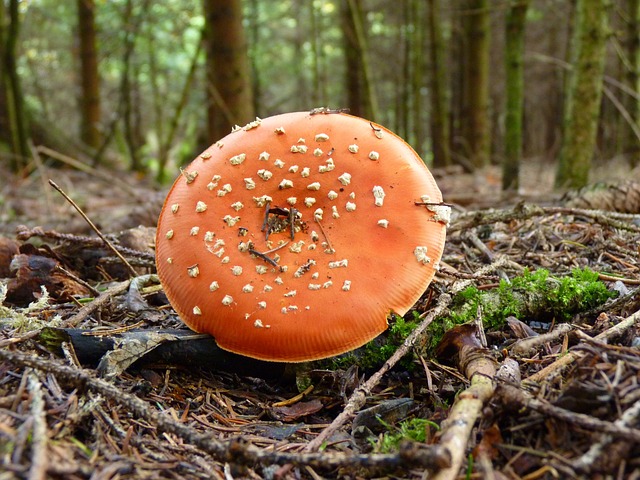
The future of research into mind-altering substances, including the iconic Amanita Muscaria edible mushroom, holds great promise and presents a complex array of scientific, ethical, and regulatory challenges. One of the key frontiers in this field is the continued exploration of the pharmacological properties of Amanita Muscaria and its active compounds. Studies aim to elucidate their effects on cognitive processes, potential therapeutic applications, and the mechanisms by which they interact with the human brain. Researchers are particularly interested in how these substances might be used to treat conditions like depression, anxiety, or even neurodegenerative diseases, while also investigating their psychoactive effects for recreational purposes.
As the scientific community delves deeper into the potential of Amanita Muscaria and similar compounds, ethical implications loom large. The potential for misuse, the impact on mental health, and the need to establish clear guidelines to protect public safety are at the forefront of discussions. Ethical considerations also extend to the protection of biodiversity, as the harvesting of these mushrooms must not threaten their natural habitats. Moreover, there is a pressing need for rigorous, long-term studies to understand the full spectrum of effects, both positive and negative. The balance between advancing scientific knowledge and safeguarding ethical standards in the research and application of mind-altering substances like Amanita Muscaria edible mushroom will be critical in shaping the future of this field.
